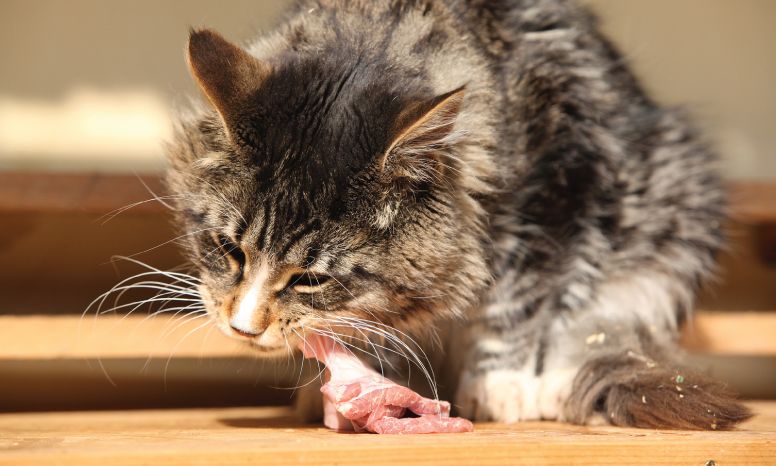Feeding your pet a raw food diet can be very beneficial for their health. However, just like your own diet, forgetting to follow the nutritional guidelines can pose problems. The best way to ensure your pet is getting everything they need from the food they eat is to avoid common raw feeding mistakes.
1. Not Feeding Your Pet a Balanced Diet
Not all raw pet foods are the same. It is important to feed your pet a complete, balanced diet. Some homemade and commercial raw diets are missing many important nutritional benefits. To avoid making this mistake, feed your pet a complete, balanced raw diet of 80% meat, 10% organ, and 10% bone that is perfectly proportioned to their size and weight. See our Raw Feeding Calculator for the suggested daily serving size.
2. Changing Your Pet’s Diet to Quickly
If you’ve ever changed your pet’s kibble diet too quickly, you probably noticed some gastrointestinal problems arise. The same can happen when you change from a commercial dry food diet to a raw diet. The best way to avoid this mistake is by slowly introducing the raw food as a treat. This will allow you to see how your pet handles the change and whether or not they like the raw food selection. Start with one raw food selection per day, and then gradually increase it to several times a day.
If your pet already has tummy troubles or immune issues, be sure to talk to your vet about the best way to transition to a raw pet food diet. Read more on Transitioning to a Raw Diet.
3. Feeding Your Pet Food That is Too Large for Consumption
If you have a pet that tends to eat quickly, and you are worried they may swallow whole pieces of meat or bone, you can grind up their food, or buy ground raw pet food.
4. Feeding Your Dog Bones That Are Too Large
Animals and animal bones come in all shapes and sizes. Not all pets can chew hard, large bones, and as a result can fracture or break teeth. If you don’t want to end up at the vet’s office having your dog’s teeth removed, then choose a bone that is appropriate for their size and the size of their mouth. If you pet is suffering from digestive issues, you may want to remove the marrow from the bone, as it might cause them diarrhea.
Be sure to supervise your pet while they are eating the bone to avoid choking or tooth damage, and to make sure they can handle raw bones. You can also choose to only allow your pet to chew on a raw bone for a limited amount of time. This will help avoid any gum or tooth damage, as some pets can spend hours chewing on a bone without moving.



